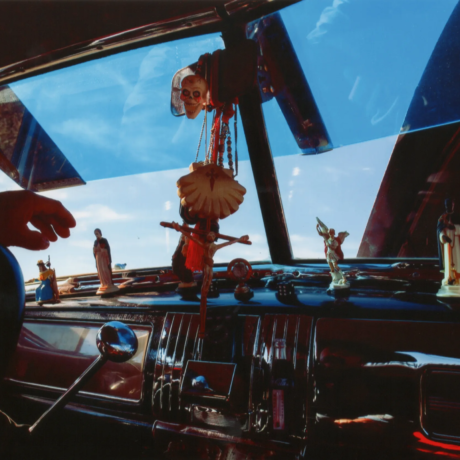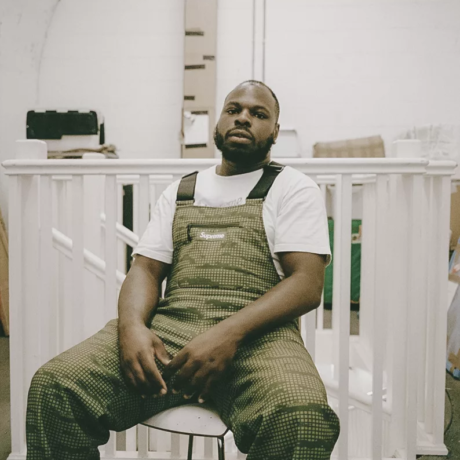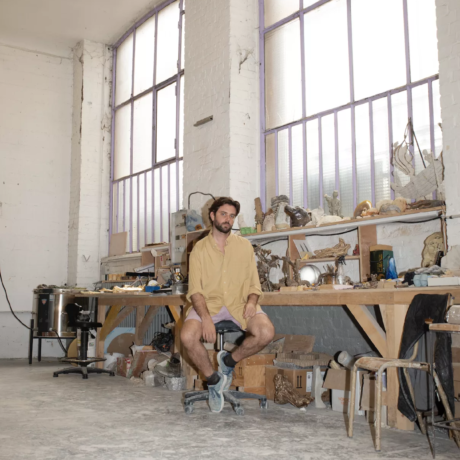“During the year 1957, I experienced, by the grace of God, a spiritual awakening which was to lead me to a richer, fuller, more productive life. At that time, in gratitude, I humbly asked to be given the means and privilege to make others happy through music. I feel this has been granted through His grace. ALL PRAISE TO GOD.”
-John Coltrane, from the album notes of his 1965 masterpiece, A Love Supreme

When Devon Turnbull was an infant in New Jersey he crawled between the speakers of his father’s Pioneer built system and moved with the music. His parents listened to the greats of classic rock; George Harrison; Phil Collins—and his mother was particularly interested in New Age and ambient music like Brian Eno.
It was the beginning of a childhood devoted to music. And though devotion is often in praise of love, it implies a deeper respect. There’s a story Devon’s mother often tells of a time when he was five years-old he and his family visited a Chinese restaurant, and to their surprise, a full band came in to perform traditional Chinese music. While his family continued to eat and talk, Devon was turned, still, listening to the music. “I would constantly look at my mom, sort of in a state of disbelief and ask her why people were still eating and talking,” he told me. “The musicians were playing.”
Would you speak or eat over discussion with the divine?
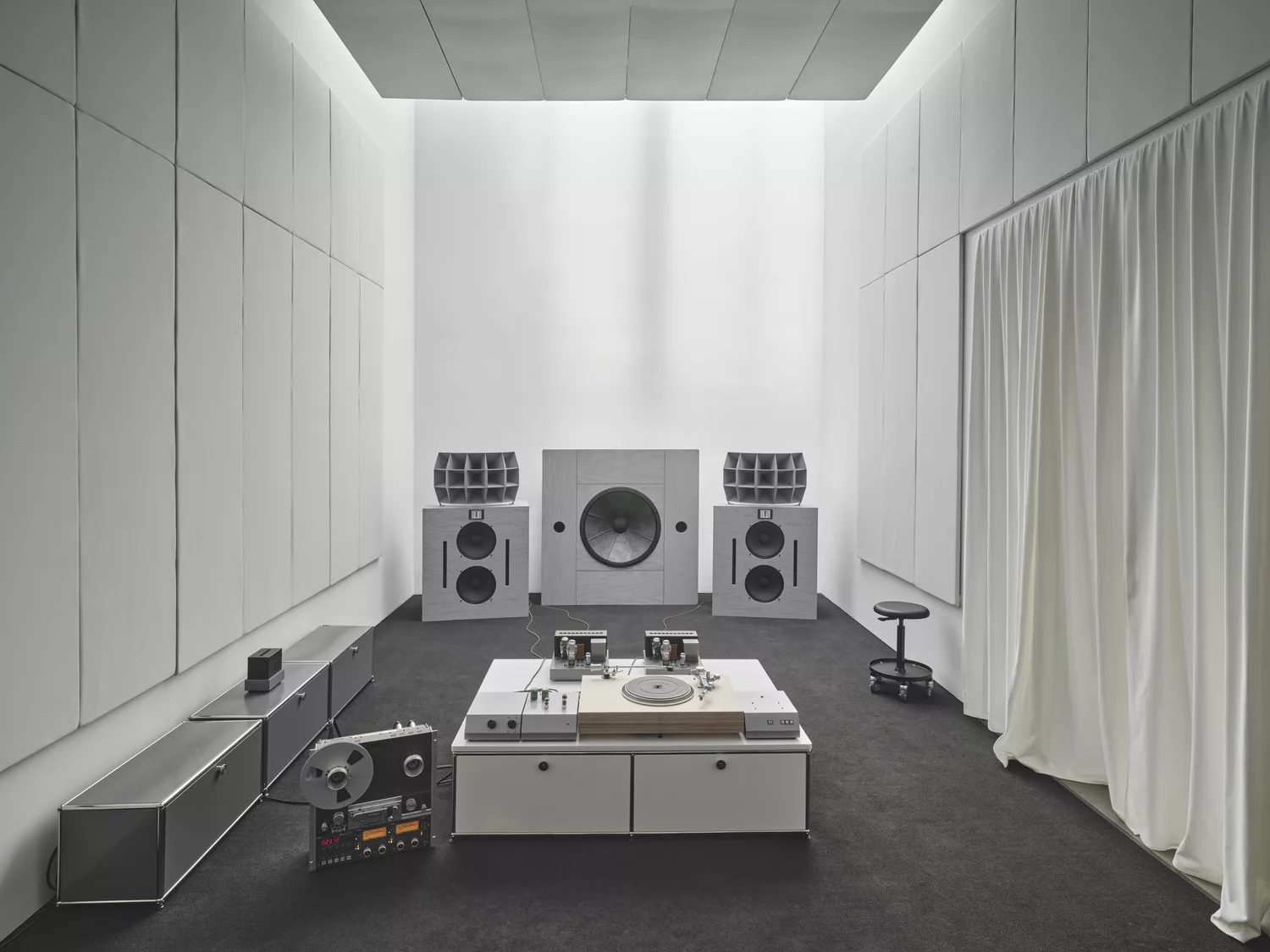
I met “Ojas”—Turnbull’s moniker from his days in graffiti writing that roughly translates into Sanskrit as, “life vitality”—on an overcast day in London at Lisson Gallery during the summer run of his first solo exhibition in London, HiFi Listening Room Dream No. 1, a free, drop-in sound experienced described as an “experience for all to surrender to the act of listening, with rare intention, to recorded and live music.” When I arrived to the gallery, I waited in the main showroom before realizing that the carpeted section down a corridor was my original destination. I greeted Turnbull, who sported a Carhartt tuxedo and a cap above his sharp, light face, which featured serious grey eyes. He wore no shoes, as we all were meant to remove them before stepping onto the soft floors—there was no explicit requirement to do so, but I figured his shoe-lessness was an invitation to relax.
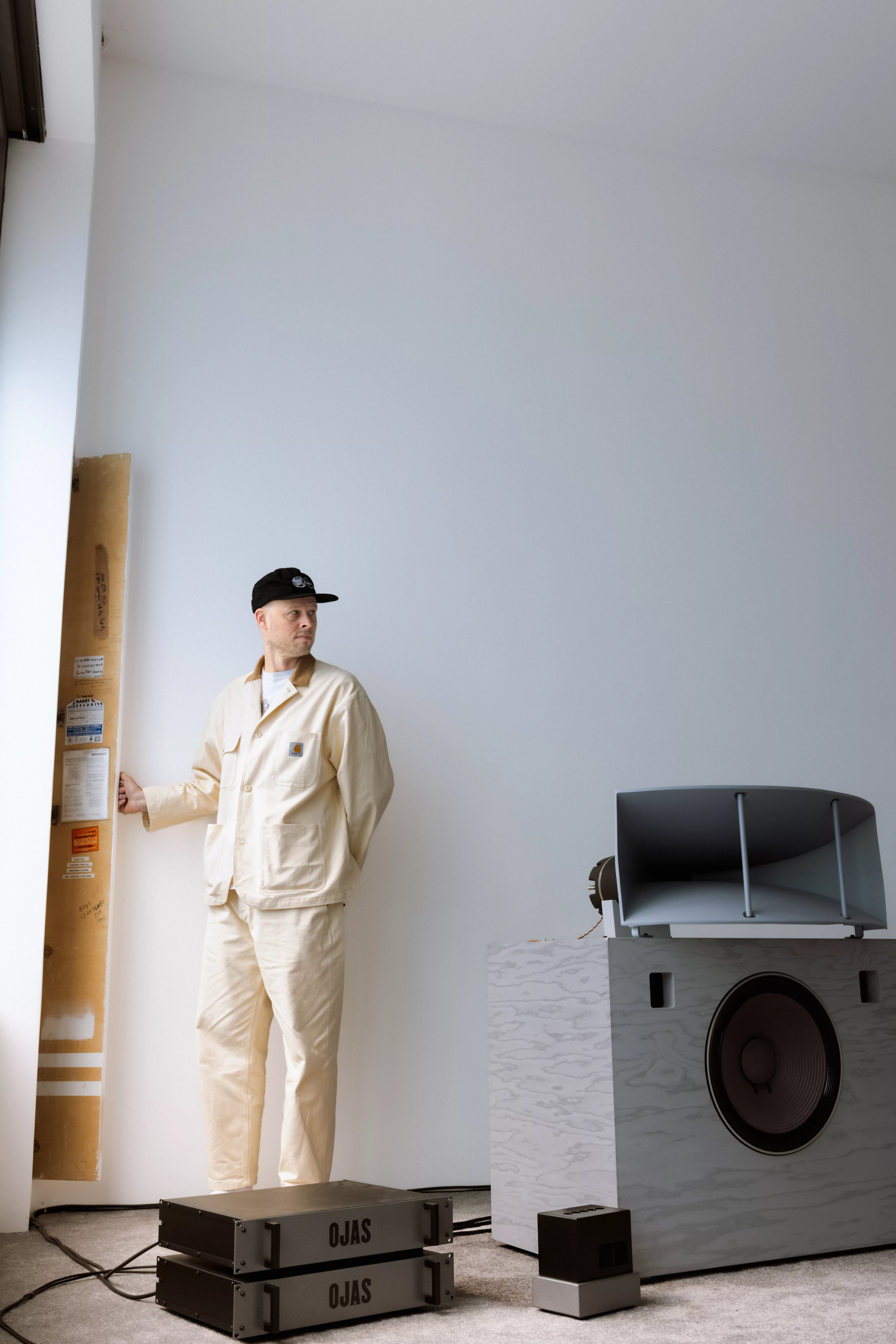
I entered the listening room, which featured a breathtaking sound system of his own creation. I admittedly am less than a novice when it comes to music technology, but even I felt I was in the presence of a humble excellence. The slate-grey speakers and subwoofers, which Turnbull hand-built, matched a crate of records, whose contents remained both inside and rested against a USM coffee table. Atop the table were a phono preamp, a line controller, power amps, and a turntable.
The tape machine, which rested next to the USM, turned and reeled a piece from Blue Note Records’ tape archive, which he had exclusive access to for this show, as we entered the room. He explained to me, as if he knew how little I understood about what was before me, that there was no better way to listen to music than with what was in front of me.
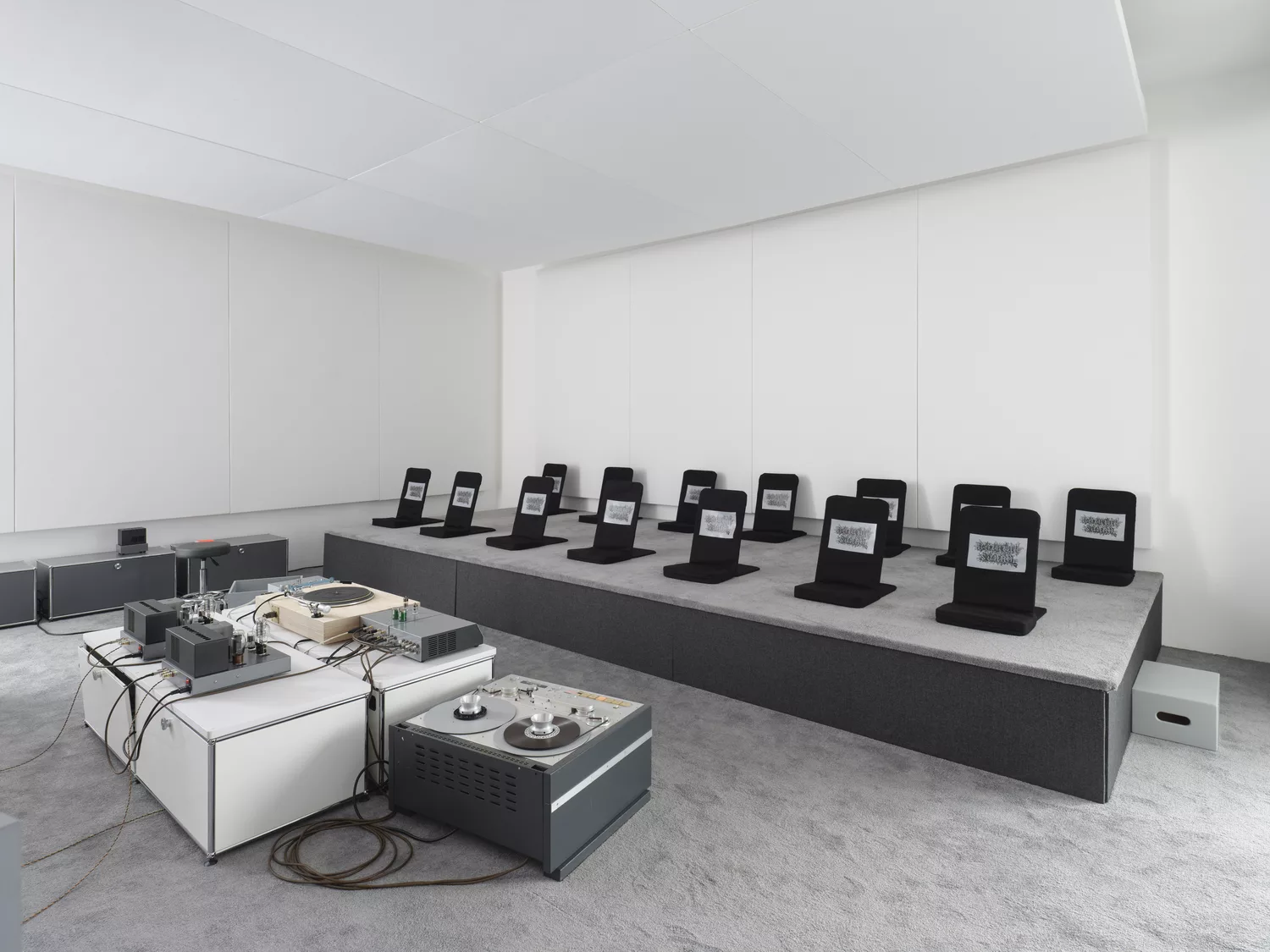
He doesn’t personally believe that perfection in music is possible; it’s like saying a country or a sports team or an idea is perfect. He said that he has personally seen systems that are developed for certain spaces—one may be tuned by measurements and another by feeling—where people naturally gravitate toward those tuned according to feeling. It’s a level of sonic perfection that is for the intent of achieving a personal perfection, rather than an objective perception of technical perfection. “Audio as a whole is the sum of the parts,” he explained. “Sometimes the parts make changes that you can’t immediately perceive. The case is true with both feeling and measurement.” Sometimes someone may notice something that can be fixed through measurements, but most people cannot. Though, fixing many smaller problems according to feeling will result in noticeable difference. And such a minutia requires the most exact technical finesse and hardware, which he has all but devoted his life to finding.
I asked him to put a record on for me, foregoing what would have seemed the obvious decision to let him choose something for me, because there was only one record, if I had the choice, that I wanted to hear if this was in fact the greatest place I could experience it: Promises, the sublime collaboration between Floating Points and the late musical shaman Pharoah Sanders.
I sat in one of the rows of prayer chairs that faced the speakers, and I listened, for what felt like the first time in forever, to music. As I listened to Saunders play the saxophone, hearing the smallest contact of skin against the keys, I almost felt his presence. And I understood, finally, where I was: a place of communion with the universe and all who have chosen to remember its vibration.
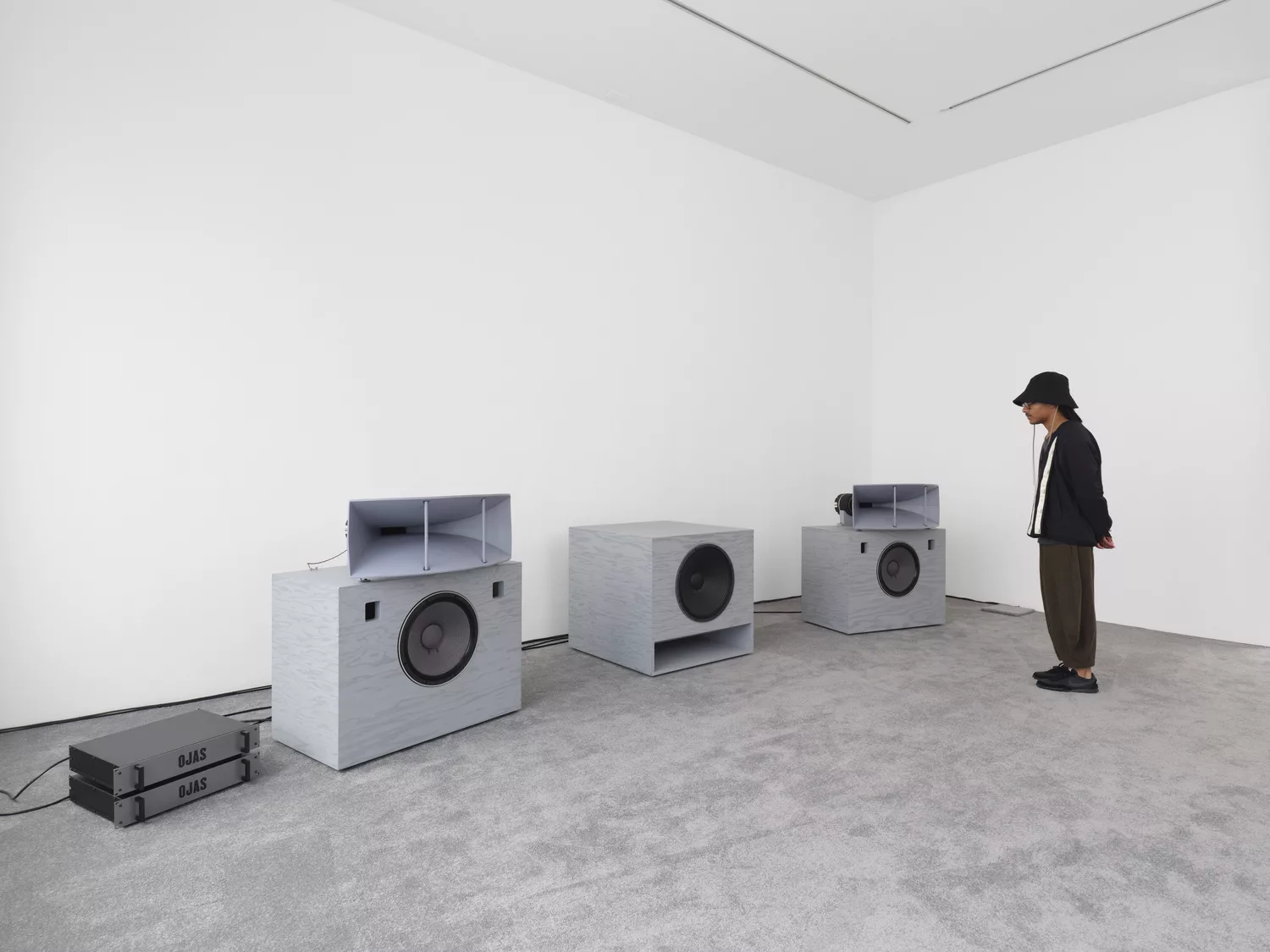
I was a stranger to his art, so foreign I am not even sure what I could call it beyond what I saw in front of me: a curator of the divine.
When Turnbull was eleven, his family moved to Iowa to the center of American transcendental meditation where they became deeply involved in the practice. His parents currently work in psychedelic therapy research through NYU and Johns Hopkins. Turnbull attended the Maharishi School, an alternative college preparatory school affiliated with transcendentalism, where students spent hours every day in meditation. Though, Turnbull’s family continued to visit New York for at least a couple of months out of the year, where he continues to call home. In 1993, when he was thirteen years-old, he joined a group of friends in New York who were about five years older than him, who were interested in a relatively underground genre of music that was about to explode: hip hop. It pushed him to discover new genres outside of what his parents showed him. It was around this same time that Turnbull began to DJ, which he developed among his older friends, one of which had an advanced set in his dorm room that Turnbull and his friends would experiment with.
What developed too was an obsession with collecting, visiting historic spots such as Fat Beats and Sonic Grooves, where he found rare music and spend time familiarizing himself with the pulse of New York. He also developed a practice, which he continued when he would visit London with his father on his work trips, of discovering underground music shows through flyers posted in these record shops.
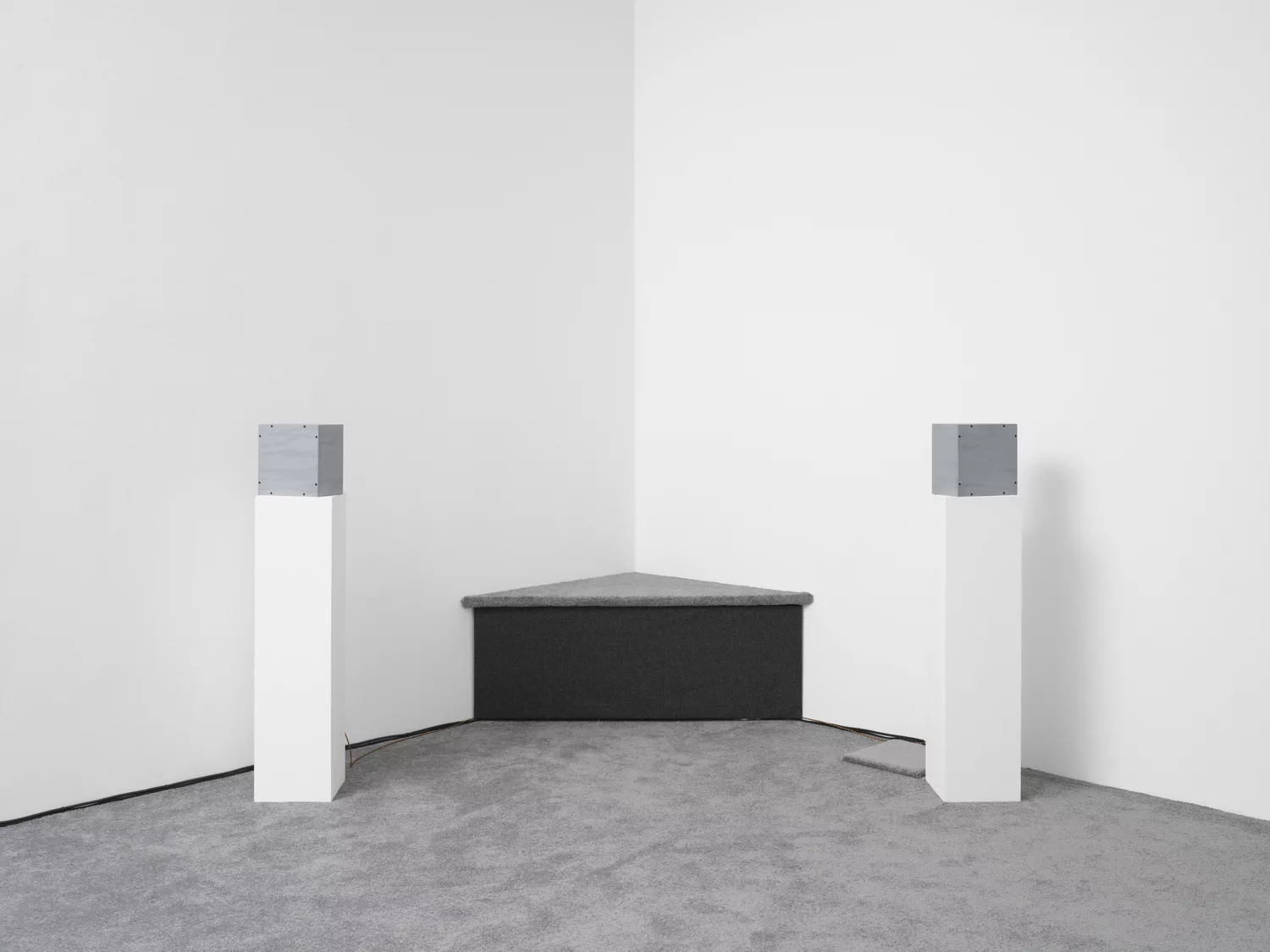
It was all to fuel a love, a personal relationship with music, which he wanted to go beyond his early lessons in playing the keyboard. He inherited his father’s component-based sound system (as his father periodically updated their family system) that became a central fixation of his life. He used it to share music with others, even in its smallest scale, privately, in his home. But even this early practice of DJing was a way to sit in the peace of music with others as he did with himself. He would sit at night, in the dark, listening to his records, at one with his first love.
Turnbull dropped out of high school his junior year and for the most part has moved away from the broader movement of transcendentalism, though he has kept its teachings close. He would make his way to Seattle where he studied audio engineering and built his DJ practice. He made his way back to New York where he developed an interest in design through his renowned streetwear brand Nom de Guerre. This work took him to manufacturing offices in Tokyo, where he became exposed to a vast music culture, magazines, and equipment collection. “Generally everything in that world is handmade,” he explained. “The best stuff is what is called point-to-point wired, meaning there is no circuit board in the chasse. There’s no way to mass produce those things.”
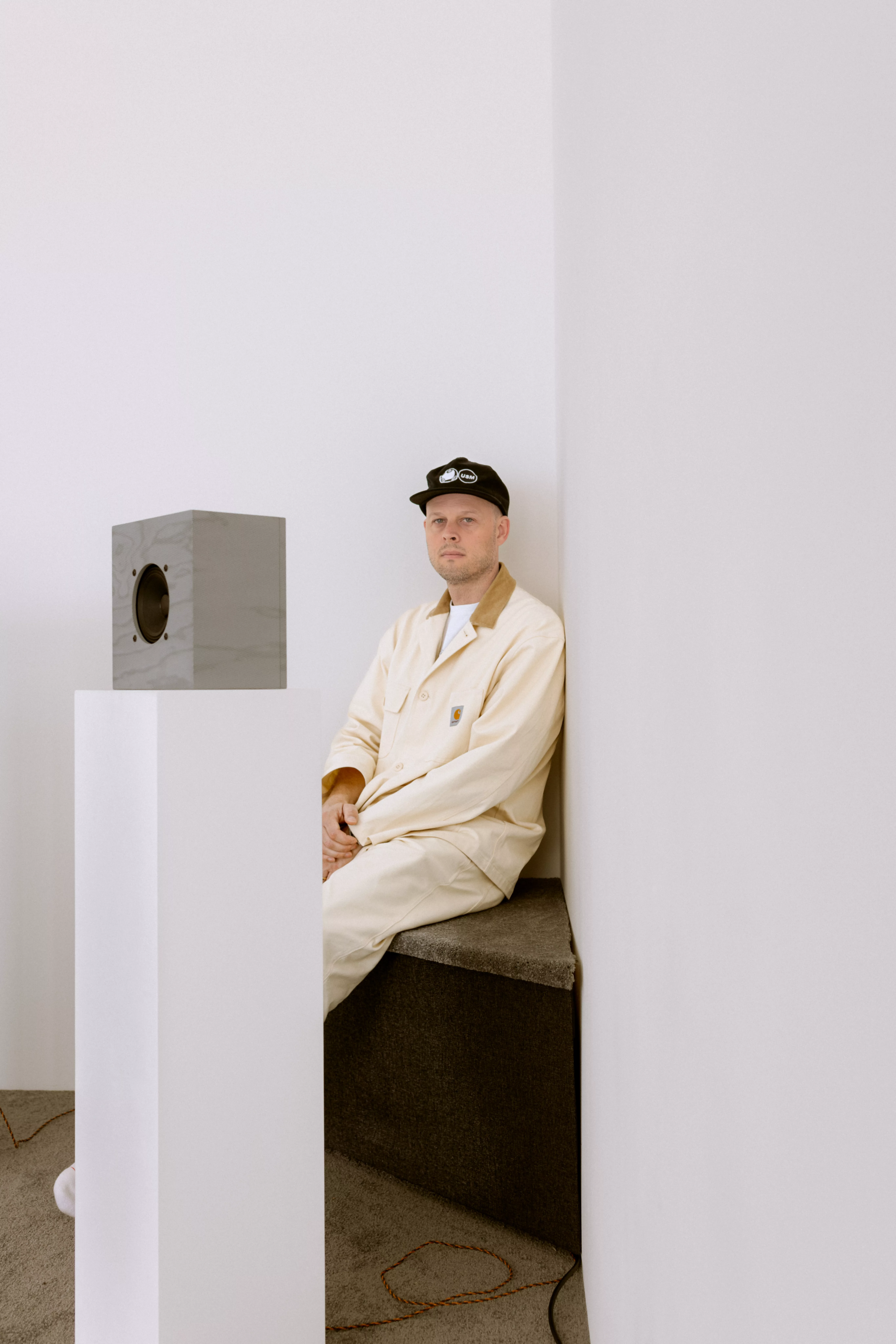
Around the same time, Apple began to significantly develop their interest in the audio market with ProTools and the iPod, which at the time had no accompanying iTunes store, so most music was listened to by ripping CDs or downloading music from websites like Napster. It made for a special time in the audio community where one person may trade a hip hop file for jazz, which began to democratize the DJ community after genres had previously been segregated, and opened up an entire universe of music previously undiscovered.
Though, he began to scorn the poor audio quality of such listening methods and longed for tape and vinyl recordings from his youth. He recalled how powerful his experience was listening to John Coltrane’s A Love Supreme on his stereo system, audio masteries he hadn’t listened to in forever. He wished instead to return to his roots.
It was then that he began to realize his studies could realistically aid him in building his own sets. “I liked the idea of having equipment that gave me a closer relationship with the music,” he said. “My hand would be involved in the creation of that equipment and sound of it would be dictated in the choices I made when building those things.”
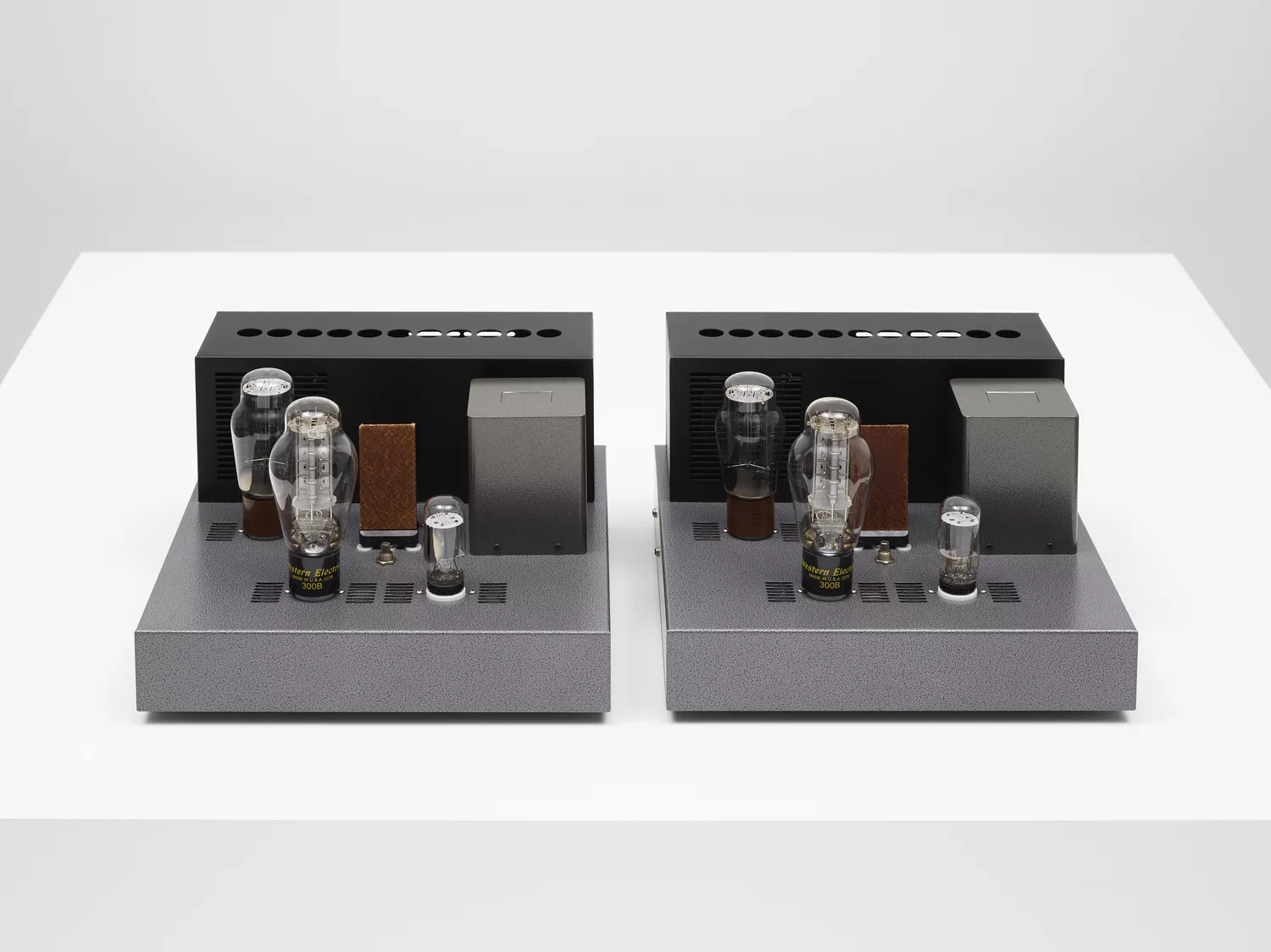
In a way, it was fulfilling his dream of playing with the musicians he loved, whom he equates to shamans, by participating in how he received them. “I’m listening to Neil Young‘s fingers playing the guitar and I’m listening to the sound of his guitar and his amp and the mic,” he described, “but also the pickup and the phono stage and the power amp and the speakers.” It’s all one loop that the music is going through from acoustic vibration in the air to transducer turning it into an electric signal that can replicate that vibration, record it, reproduce it, and turn it back into vibrations in the air, which he has a role in translating through his builds.
In his research and experimenting, he began to discover that to develop the preciseness in his systems he needed through vintage hardware, he would need to dive deeper into the HiFi community to find such rare parts. This led him to search for others within a similar school of thought that could help him find the pieces needed. He discovered a group of builders in New York that were a part of thriving audio engineering era when he was a child, but by his mid-twenties, that time had come to pass, and he didn’t yet feel ready to approach them. But once he developed his own building practice, he found them and they became some of his mentors, repairmen, salesmen, and essential fellow artisans who helped him find others around the world who were dedicated to creating parts that had the precision he required.
No one would spend years developing a capacitor, and then only make ten for themselves, right?” He said. “You’re going to make thousands, or hundreds, and distribute them through a cultural network of people who are interested and know what to do with that thing that you’re making. So, you know, I rely on a whole network of sort of artisans that are making my capacitors, transformers, speaker drivers, tubes even.”

He relied too on a diminishing yet prolific archive of sound magazines, many Japanese, most notably MJ Audio Magazine and Stereo Sound, as well as the American magazine Soundscape, an important sound magazine in the ‘90s that many of his mentors contributed to. For some time, the magazine’s founder Joe Roberts was selling CDs containing PDFs of the entire collection, which is how Turnbull acquired its trade secrets. He had attempted to contact Roberts with few results. Until a few years ago when Turnbull discovered that, while moving, Roberts was selling his collection on eBay out of his late mother’s basement. Turnbull purchased a few complete collections for a few hundred bucks and then took to his Instagram to advertise for Roberts that he was selling his incredible collection. The next day, Turnbull finally received contact from Roberts. “‘I don’t know who you are or what you did,’” he retold, “‘but you just sold out my entire collection.’” Out of gratitude to Turnbull, Roberts sent him the remaining issues from the collection that he still had.

It gratified Turnbull to give back to someone who had provided him with so much through the excitement of his own community, which had grown over the aughts and 2010s. He was commissioned by music legends such as the producer Mark Ronson as well as public creative figures like his friend, the late Virgil Abloh—the post-mortem Abloh exhibition “Figures of Speech” at the Brooklyn Museum featured speakers Turnbull made for Abloh. He also developed the speaker systems of cultural landmarks such as The Ace Hotel New York, Nine Orchard Hotel, and Public Records. He also found his way back into fashion by building the sets for New York’s Ssense and Supreme storefronts.
And it was through such high-profile work that Turnbull embarked on his new mission: to preserve and develop the sparse HiFi community, which was becoming almost extinct in Japan, through means of a critical mass. He would have to become, himself, a searchlight for those who were willed toward a same calling to worship music.

When Turnbull was a child in Iowa, he learned and practiced with Gandharva Veda music, spiritual melodies aimed to influence the worshippers’ mood to help achieve closeness with the divine, which those in the community would gather to listen to. “In my adult spiritual philosophical outlook, I don’t have a spiritual practice or religion,” he continued, “for me the most spiritual moving experiences, the thing that affects my mental state the most, is listening to music.”
He began to develop the Listening Rooms project, first as an Instagram community where he collected his magazine archives, which then became in-person experiences. They harkened back to his early childhood of wondering what it would take to get people to be still and listen to music. Through his online and collected community, he began to gather people in various spaces in New York and London that aimed to emphasize set and setting, an important tenant of transcendental meditation. He wished to replicate the experience of experiencing audio in his home studio for public appreciation. “I’ve really replicated, intentionally, the meditation halls that people practice meditation in as a group, where the space is really set up for quiet inward kind of experience.” He admitted. “But we don’t say, you know, ‘Please take off your shoes,’ or, ‘Please don’t talk.’ People just see the room they take off their shoes, they walk in, they start whispering, and they just listen to music.”
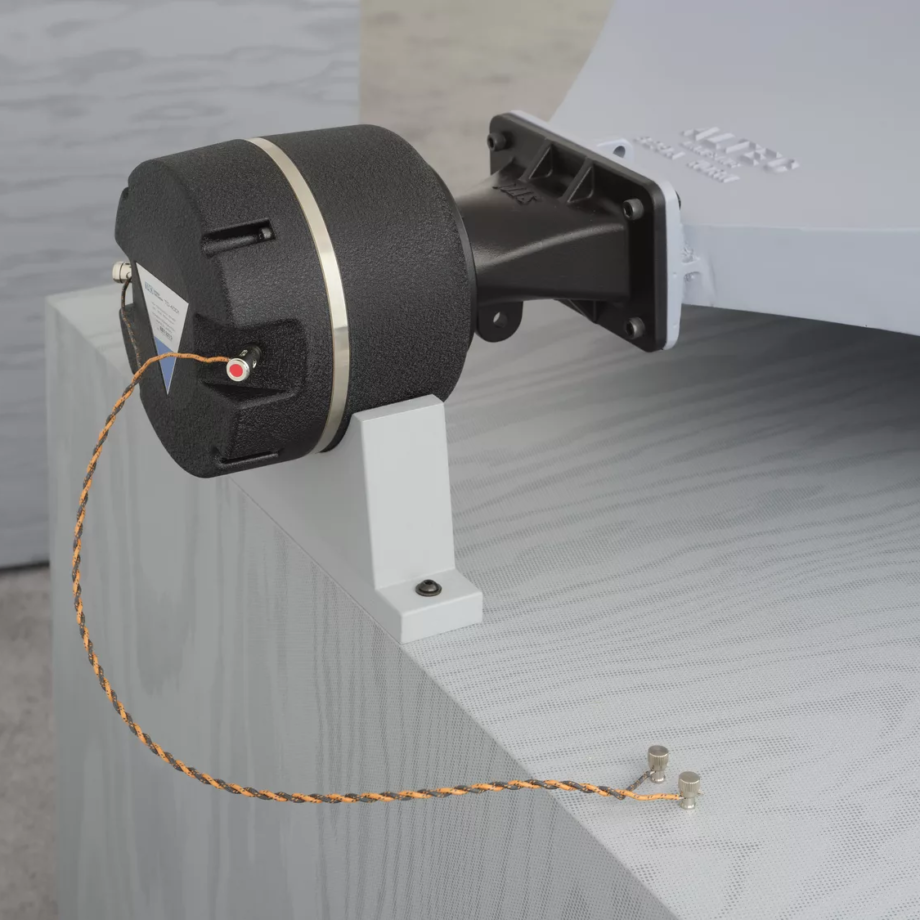
And it wasn’t until I saw Turnbull for the second time in our home, New York, that I understood what effect his music had on others beside what he made me feel in the London listening room. I intended the opening of Ojas Listening Room at USM Modular Furniture, an ongoing listening room experience that was open to the public. It was one of the first nights of fashion week and the streets were already alive with hungry SoHo dwellers bouncing from one event to another. When I arrived, there was a line out the front door with purveyors wearing their fashion-week-best hoping to be allowed inside. I said simply that Ojas had invited me and was let into a crowd of happy, excited people. I saw many familiar faces, some friends in the art sphere, others that I only recognized from Instagram, other high-level creators in the New York scene like Turnbull. When I explained to one of the chatty attendants that I was writing an article on Turnbull, he gushed to me about how important Turnbull was to the audio presentation community.
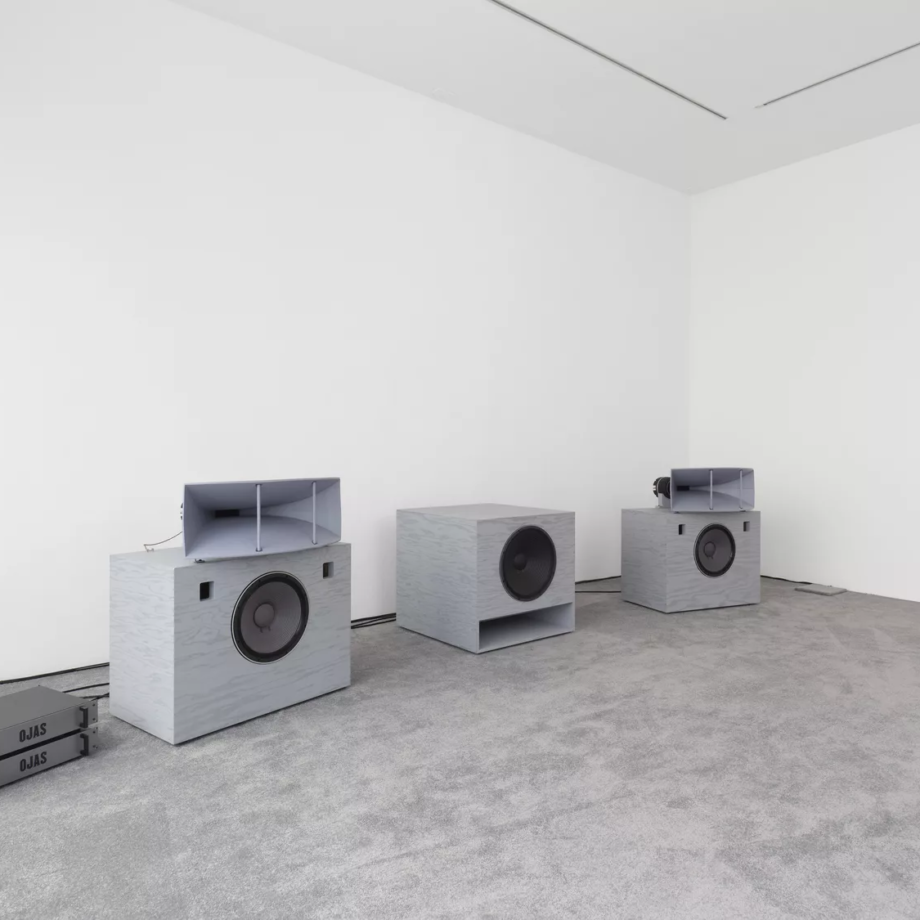
I struggled for an hour to let Turnbull know that I was there for he provided hyper focus to every single person he spoke to as he attempted to greet the onslaught of collaborators and supporters. When I finally met his grey eyes, they no longer had the serious calm he held in London, rather lit with smile lines as he enjoyed the company of his community. He introduced me to old friends, some of whom he mentioned over the course of our interviews, who had travelled to welcome Turnbull home from London. And I introduced him to some of my own friends who were fans of his work or just fans of music anywhere close in proximity. It was a rapturous, jubilant gathering that became more abundant as the room drew closer its interior, toward the listening room.
I entered and was met with immediate shock over what I saw: a room of New Yorkers sitting together, designer shoes left at the doorway, listening together. And I understood, too, that the listening room I experienced in London was merely a more humble, devotional iteration of what I saw before me. It was virtually the same in function as the Lisson room, only with an adapted speaker build for a different acoustic space—Turnbull explained that the adaptable nature of audio can make for calibrations that are often last-minute, which can be as equally frustrated in its process as it is euphoric in its completion.
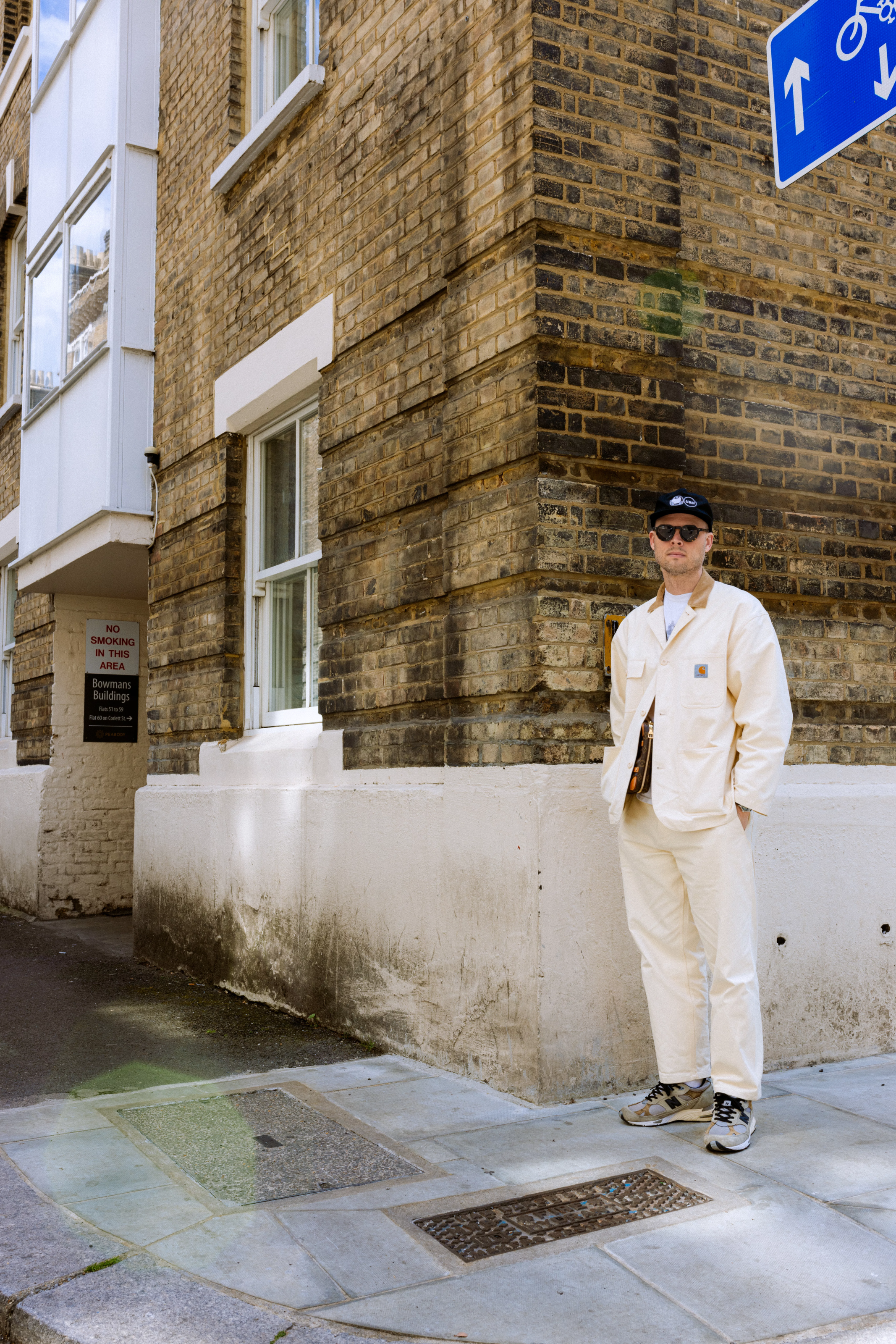
But, outside of the speaker system, it was a wholly different atmosphere. While the Lisson space was a traveling shrine, this was a place of spiritual origin, for the shelves behind the speakers were lined with Turnbull’s personal collection of spare parts and magazines.
These were no regular worshippers that gathered for Turnbull and his work, rather, they were zealots come on pilgrimage for a chance to sit, and listen, perhaps for the first time in forever, as Turnbull listens.
Words by Saam Niami

